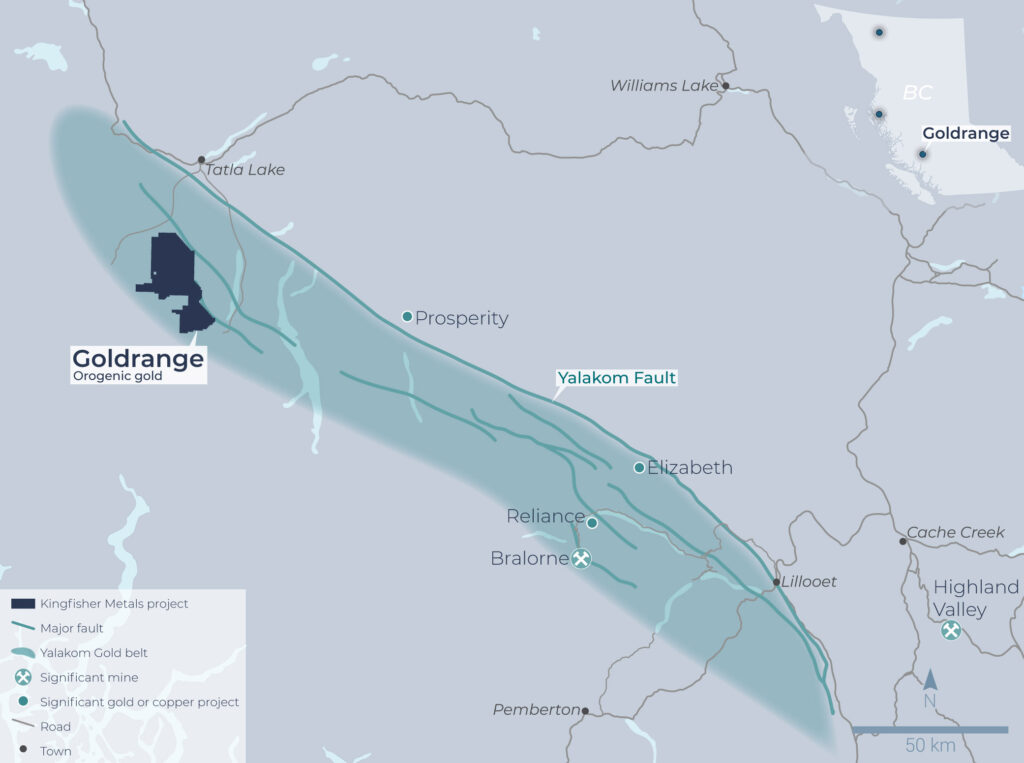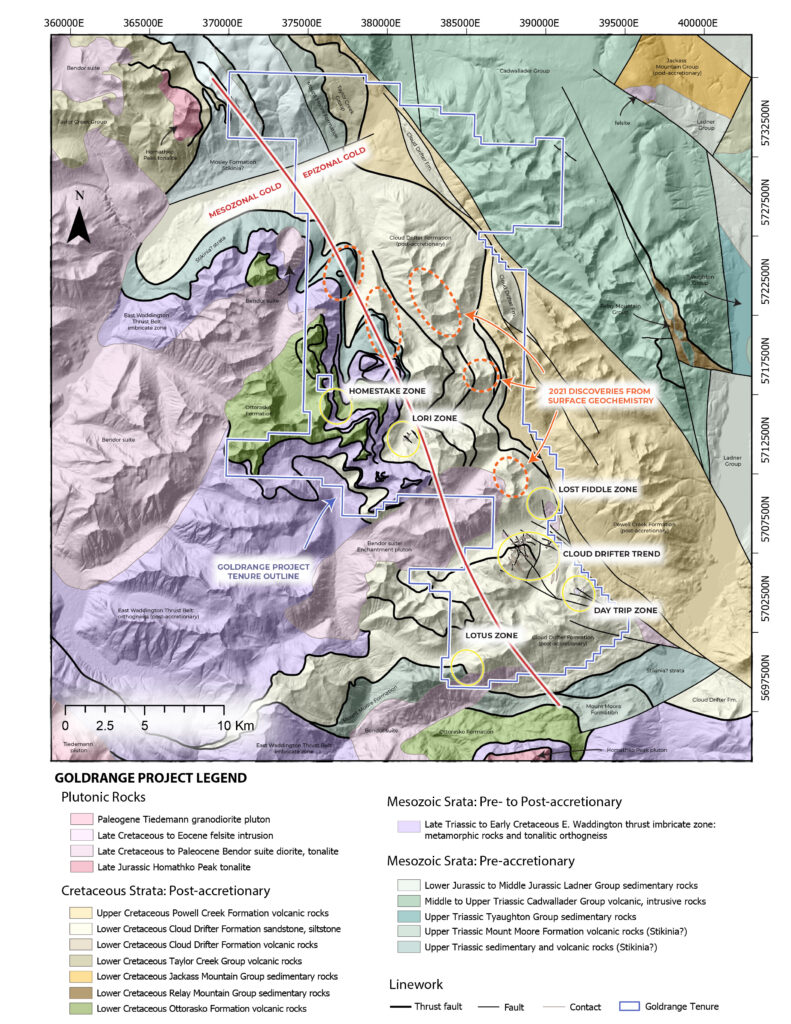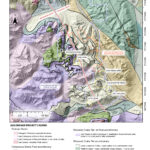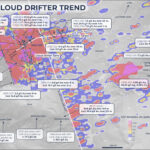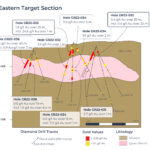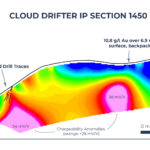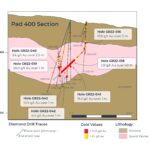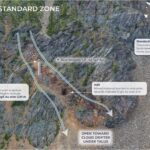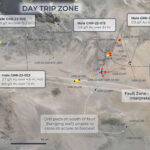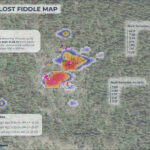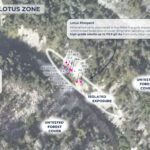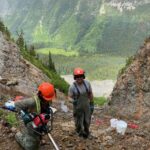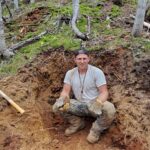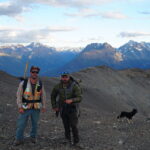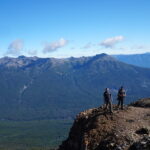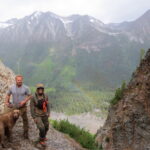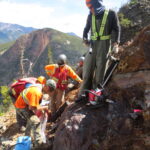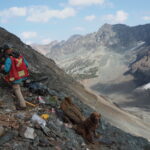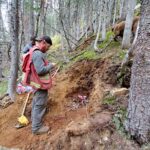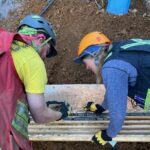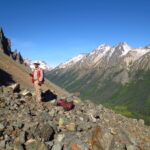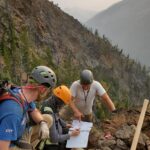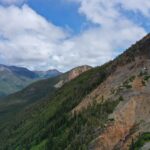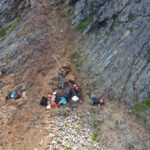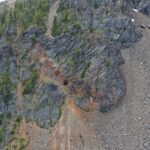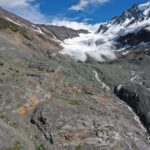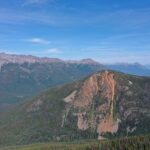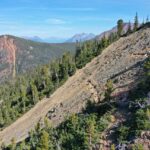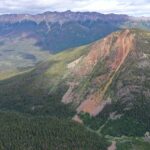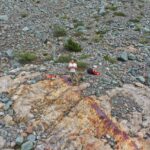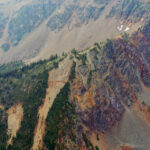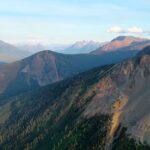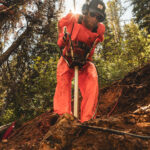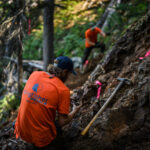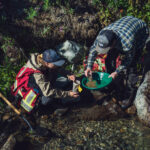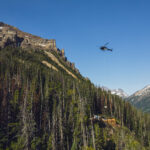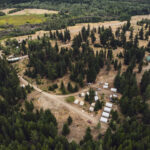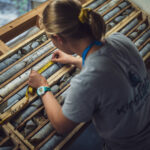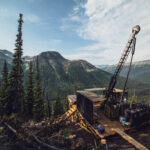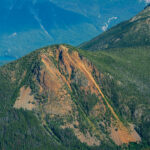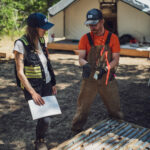Cloud Drifter Trend
The 3-km long Cloud Drifter Trend in the southern part of the property has been the focus of the Company’s exploration efforts in 2021 and 2022. The trend is covered by an extensive gold-in-soil anomaly and includes the Cloud Drifter, Standard and Langara zones.
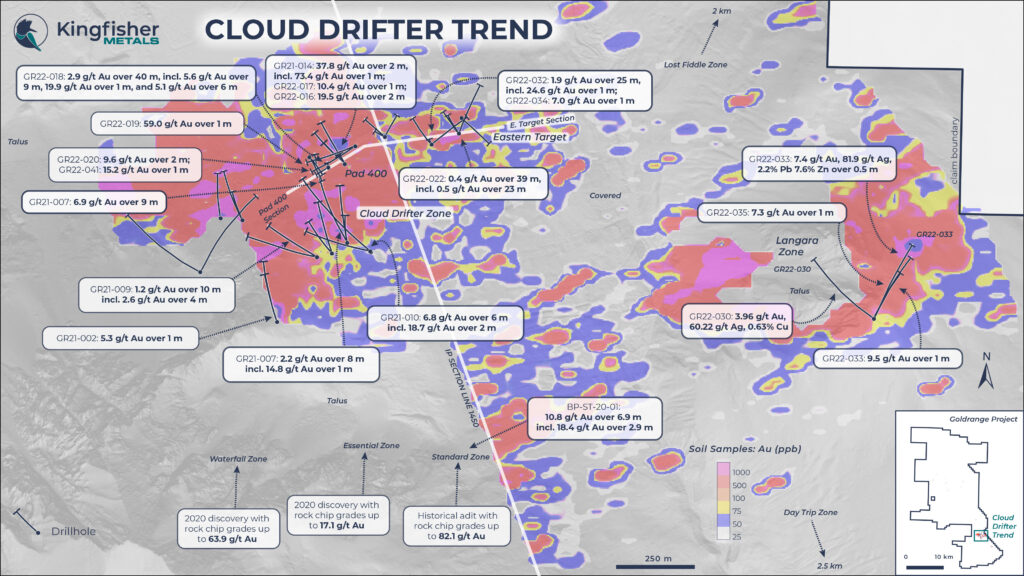
In 2022, Kingfisher’s 7,545-metre diamond drill program tested the lower (northern) Cloud Drifter zone, as well as one pad at the Langara zone. This program followed up on the initial 14-hole, 4,925-metre 2021 diamond drill program that tested across the Cloud Drifter zone. The inaugural 2021 drill program targeted high-grade gold vein and breccia in the upper (southern) Cloud Drifter zone. In 2021 drilling, the Pad 400 area returned 6.88 g/t Au over 9 m in GR21-007 and continued to return high-grade intercepts and infill gaps in 2022 drilling. Structural corridors were identified in 2022 breccia and stockwork hosted gold, such as 2.9 g/t Au over 40 m in GR22-018. Gold is structurally controlled and is also focused along contacts of diorite (see Eastern Target Section).
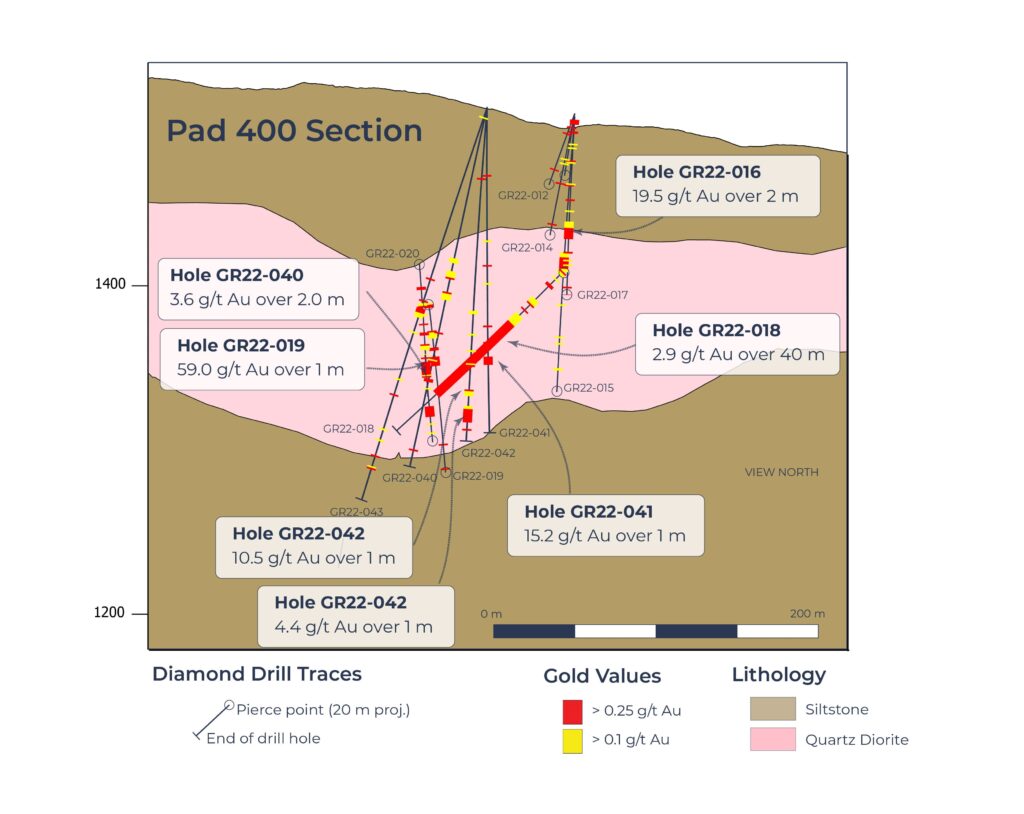
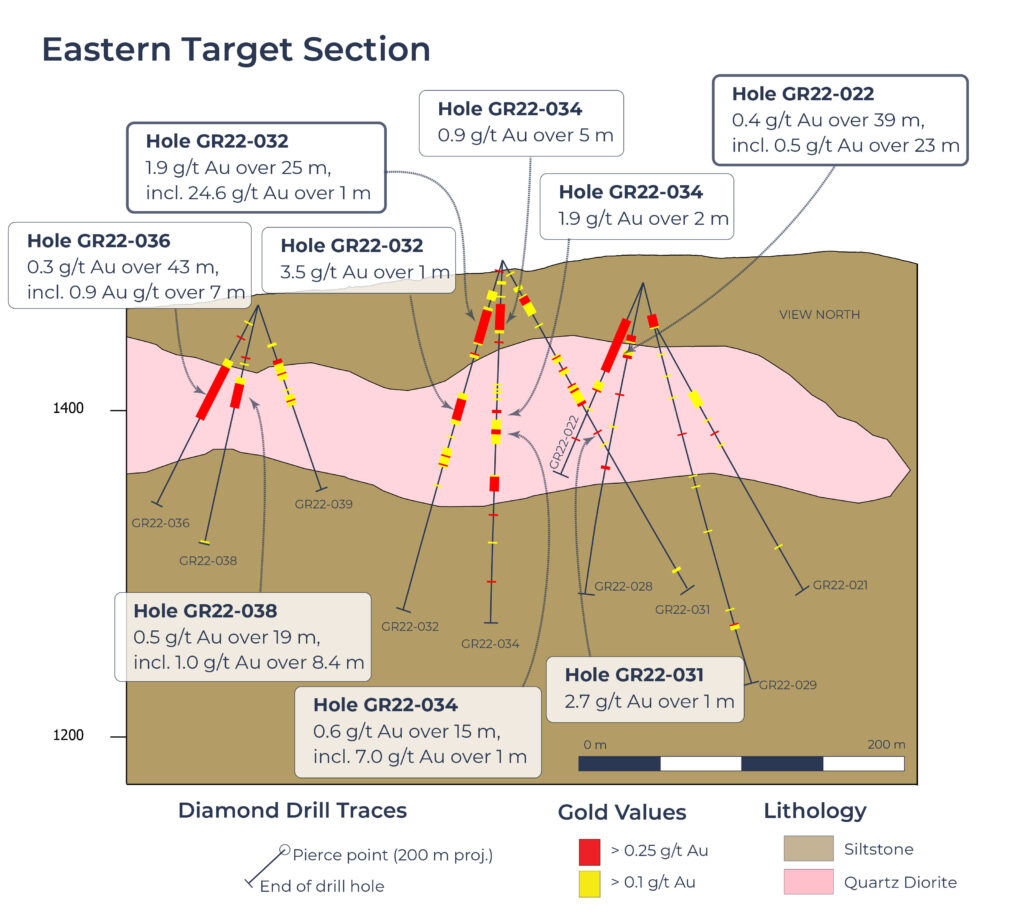
Drill highlights from the 2021 and 2022 drill programs at the Cloud Drifter zone are shown in the table below.

Kingfisher completed seven line-km of IP surveys over the eastern portion of the Cloud Drifter zone in 2022. The survey highlights two large chargeability anomalies at depth – one below the area of drilling and another below a historical adit at the Standard zone, south of the Cloud Drifter zone.
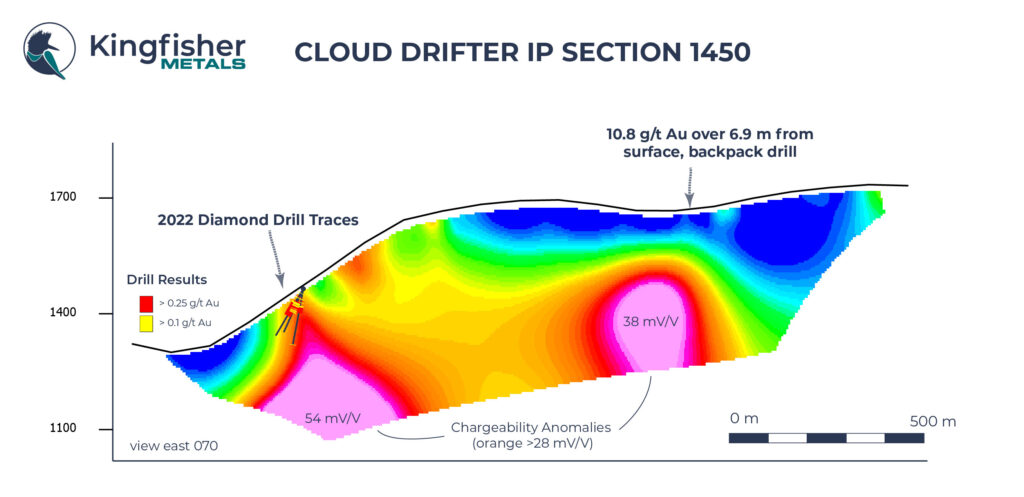
The Langara zone is located in the eastern portion of the Cloud Drifter Trend. In 2022, the first-ever diamond drill holes were completed, with four holes drilled from one pad location. Drilling intersected sulfide breccia, such as in GR22-033 below, and structurally-controlled gold.

The Standard zone, in the southern Cloud Drifter Trend, was mined in the 1930s for gold. The Company completed one backpack drillhole in 2020 that returned 10.84 g/t Au over 6.9 m.
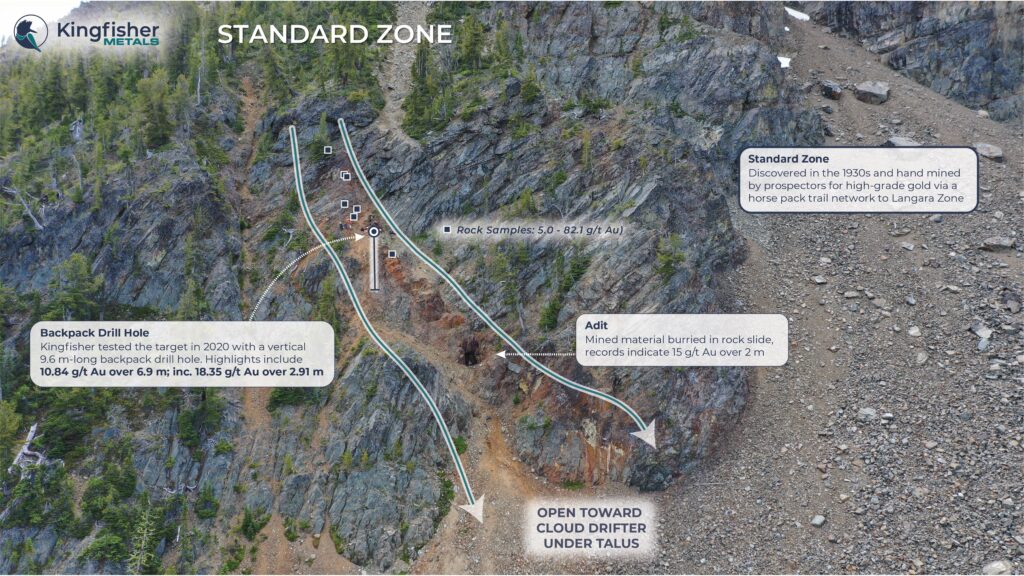
Day Trip
The Day Trip zone was discovered by Kingfisher in 2020, is located approximately 5 km southeast of the Cloud Drifter Trend. In 2022, the Company completed 32 initial rotary air blast (RAB) holes at Day Trip. This initial shallow drilling returned highly anomalous pathfinders in XRF and anomalous gold over an area of 300 x 200 m. Ground geophysical work extended the target area 2 km to the west, where strong chargeability and conductivity anomalies were identified.
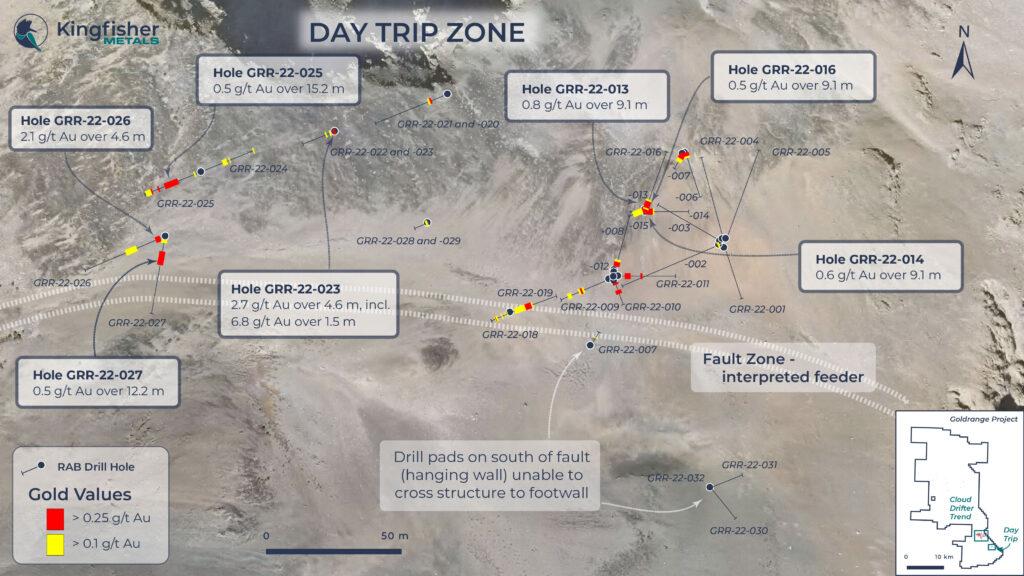
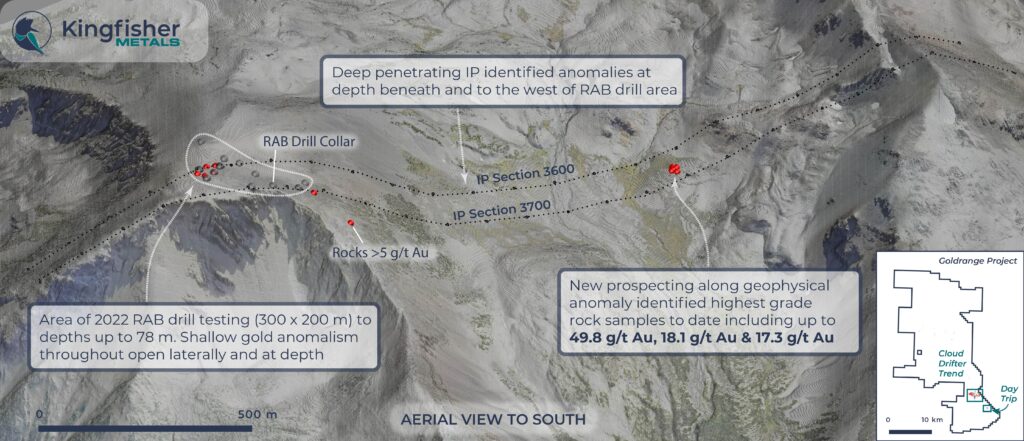
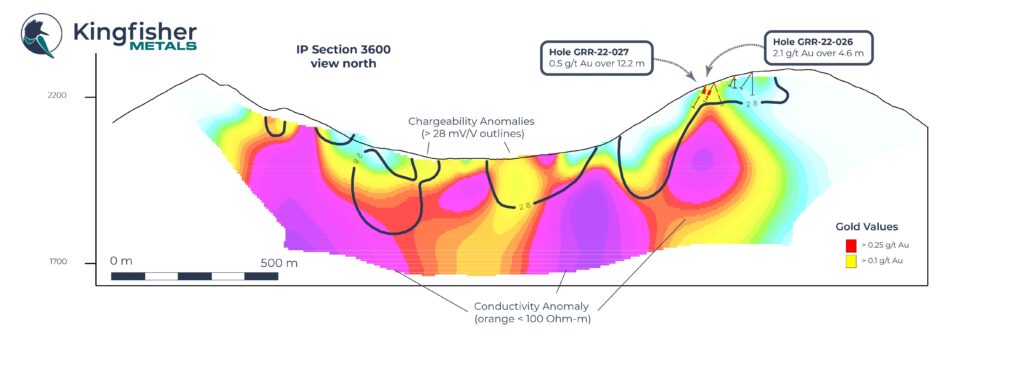
Lost Fiddle
The Lost Fiddle showing was described in previous reports, but the first-ever results were reported by Kingfisher. The prospect is located ~2 km northeast of the Cloud Drifter Trend and hosts similar sulfide-rich vein and breccia. New results from Kingfisher include 42.8 g/t Au over 0.45 m in backpack drill hole and a more than 200 x 200 m soil geochemical anomaly in forest cover. Surface sampling focused on a limited area of historical trenching, the lateral extent of the anomaly is not yet known. Future ground geophysical and soil geochemical surveys are required to delineate the anomaly.
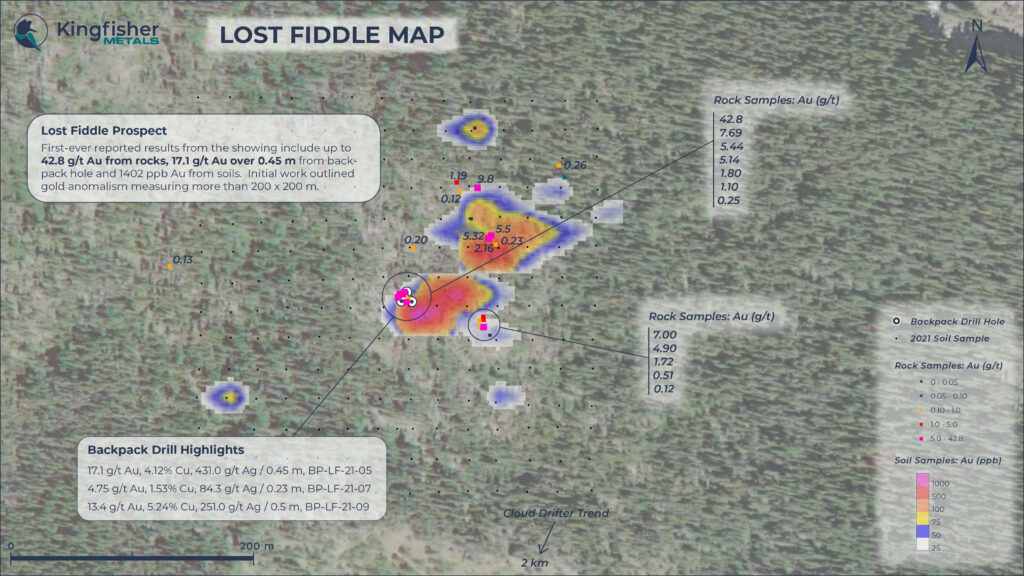
Lotus
Gold veins were first discovered in the 1990s in a gully exposure within broad forest and till cover at the Lotus prospect. Sampling by Kingfisher returned up to 113.9 g/t Au in outcrop. Future ground geophysical and soil geochemical surveys are required to determine the lateral and vertical extent of the anomaly.
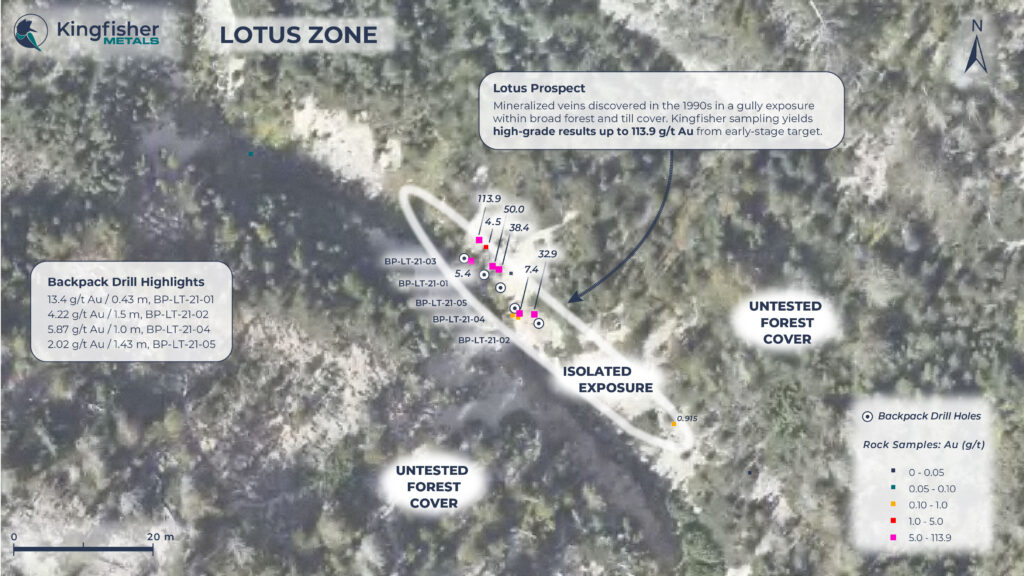
![]()
